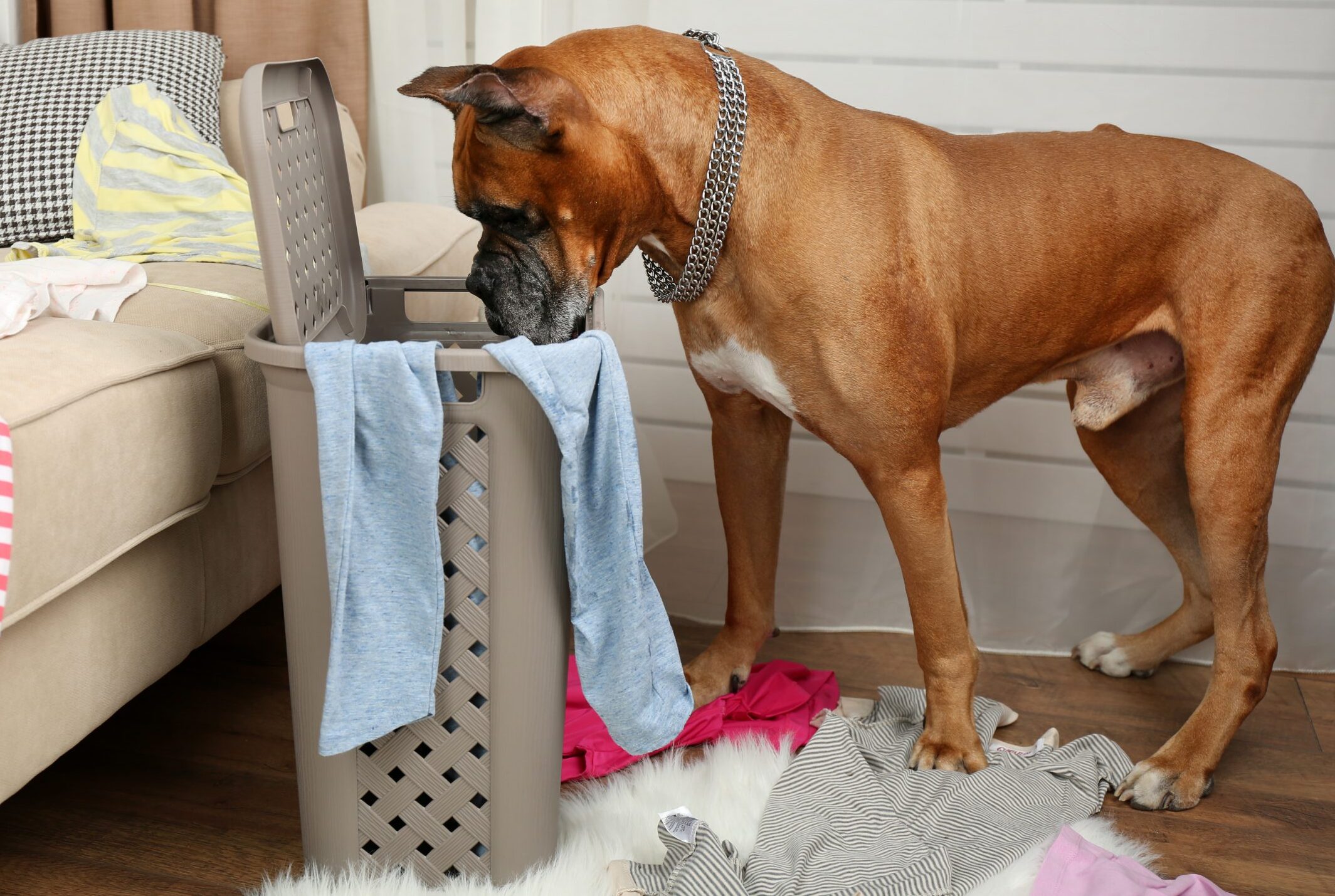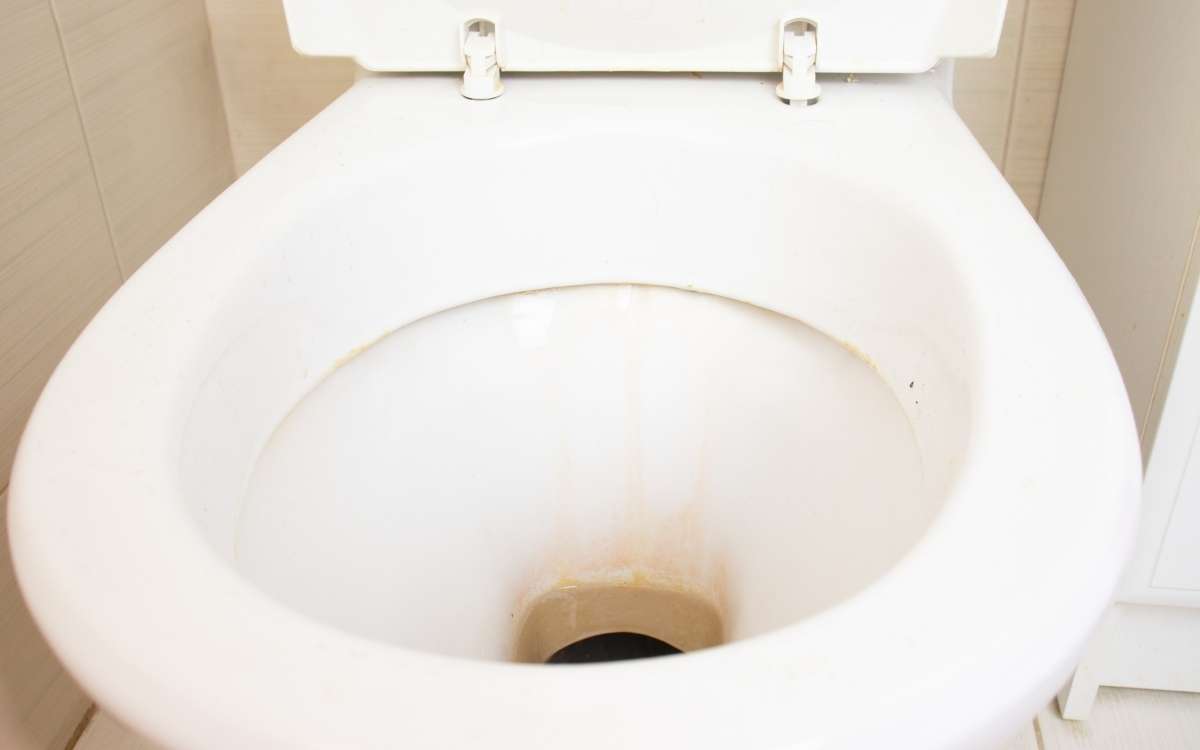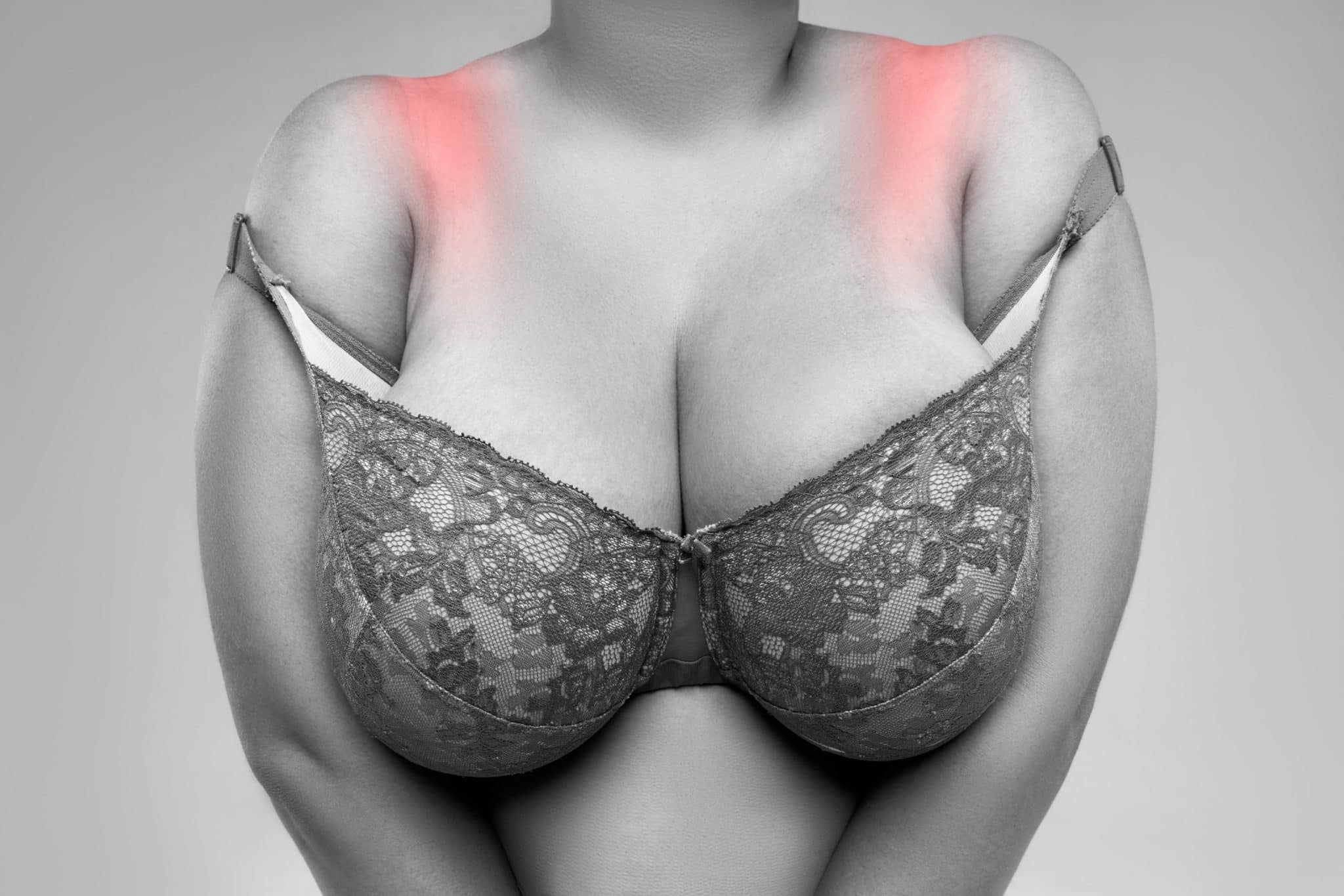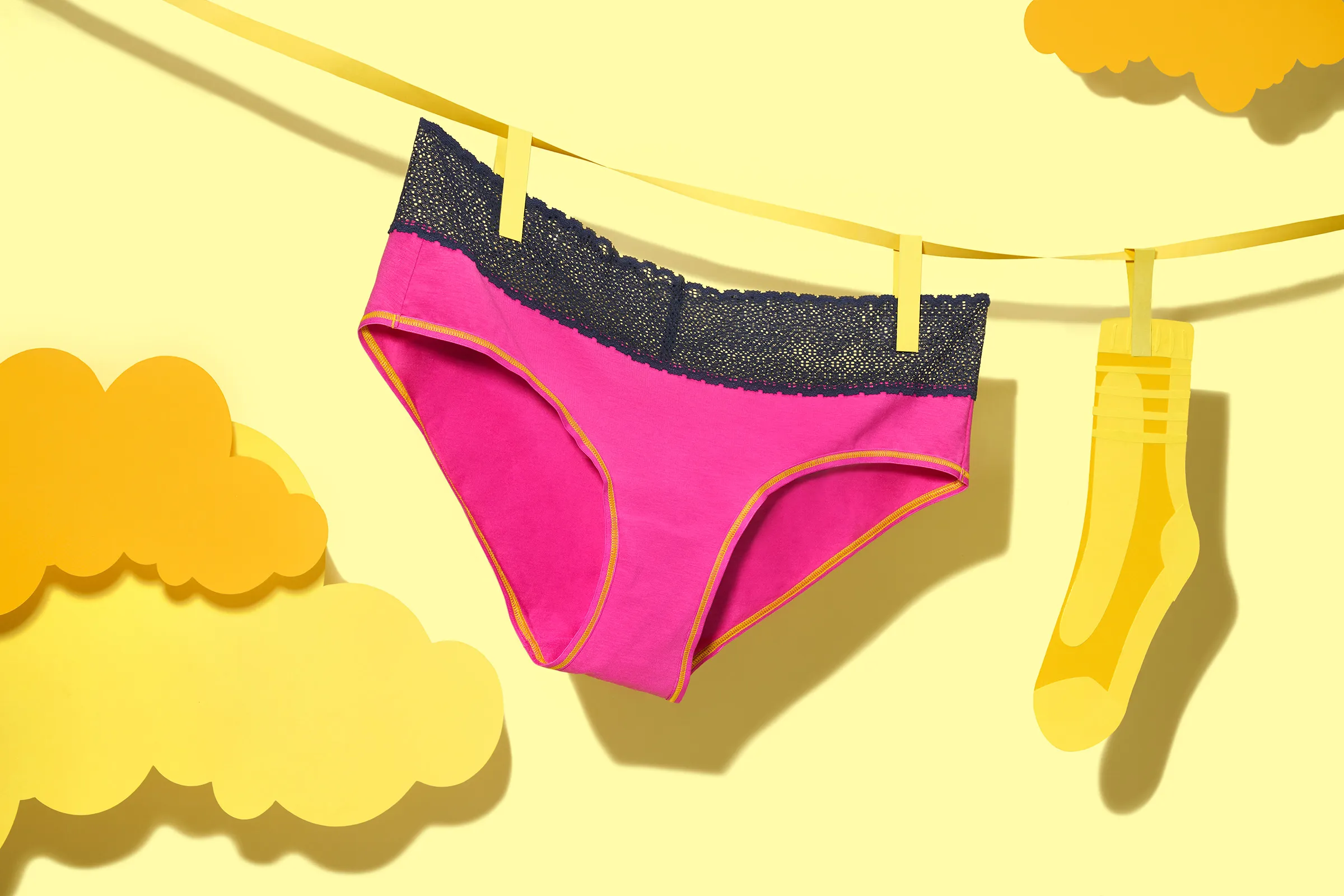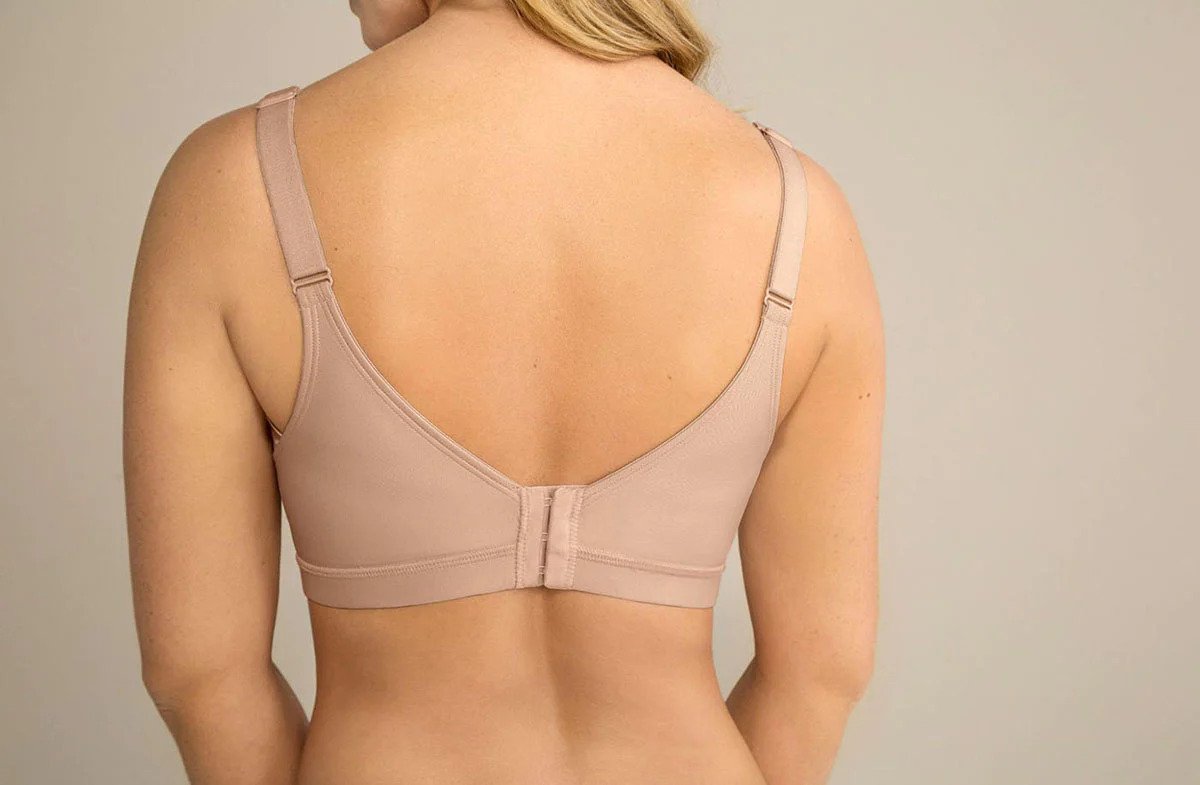Home>How-to Guides>For Women>Why Does My Pad Not Stick To My Underwear
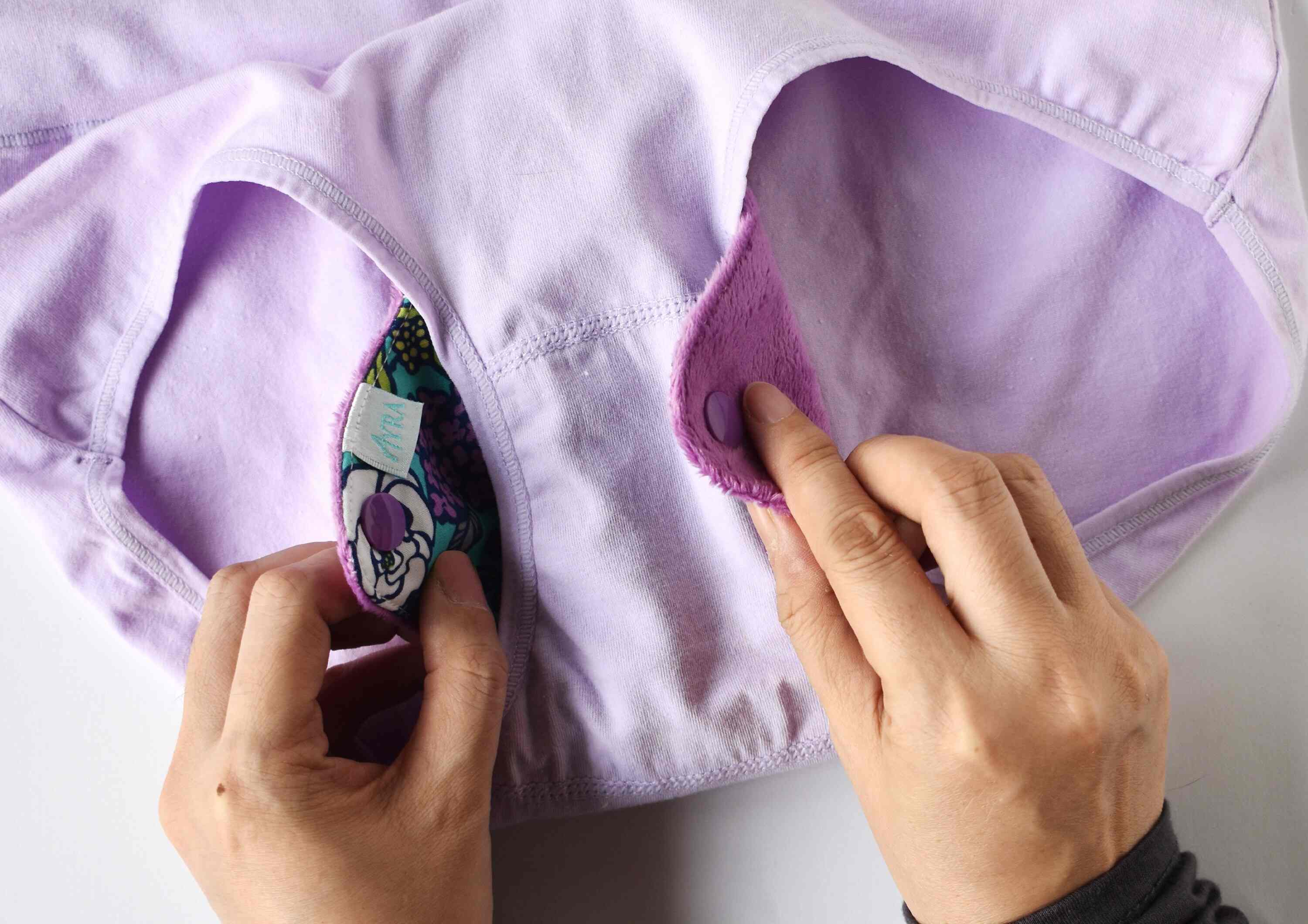

For Women
Why Does My Pad Not Stick To My Underwear
Published: July 31, 2023
Discover why your pad doesn't stick to your underwear with our comprehensive guide for women. Find effective solutions to stay comfortable and secure.
(Many of the links in this article redirect to a specific reviewed product. Your purchase of these products through affiliate links helps to generate commission for Under-tec.com, at no extra cost. Learn more)
Table of Contents
Introduction
Welcome to the world of feminine hygiene products! As women, we rely on a range of products to help us feel comfortable and confident throughout our menstrual cycle. One of these essential products is the pad, also known as a sanitary napkin or menstrual pad. Pads are designed to absorb menstrual flow and provide a barrier between our bodies and our underwear.
While pads are generally effective at their job, you may have experienced a frustrating issue – your pad not sticking to your underwear as it should. It can be a perplexing situation, leaving you wondering why the adhesive on the pad fails to adhere to your underwear. This can result in discomfort, leakage, or even embarrassment.
But fear not, as there are several factors that can contribute to this problem. In this article, we will delve into the mechanics of adhesive pads, explore the various factors that can affect their stickiness, and provide troubleshooting tips to help you deal with non-sticking pads. By gaining a deeper understanding of these issues, you will be better equipped to select the right pad and enjoy a worry-free menstrual experience.
Understanding the Mechanics of Adhesive Pads
Before we dive into the reasons why your pad might not stick to your underwear, it’s important to understand how adhesive pads actually work. Most pads are equipped with a layer of adhesive on the back, which is designed to securely attach the pad to your underwear.
The adhesive on the pad works similarly to the adhesive on a sticker. When the paper backing is removed, the adhesive is exposed and can stick to the fabric of your underwear. This adhesive layer is typically made of a combination of materials, including a pressure-sensitive adhesive, which is activated when pressure is applied.
The adhesive is strategically placed on the back of the pad in key areas to ensure optimal adhesion. These areas often include the center of the pad and the wings, which help provide extra security and prevent the pad from shifting or bunching up during movement.
It’s worth noting that not all pads use the same type or strength of adhesive. Different brands and models may utilize slightly different formulations to cater to various preferences and needs. Some pads may have a stronger adhesive for added stickiness, while others may have a gentler adhesive for those with sensitive skin.
Now that we have a basic understanding of how adhesive pads work, let’s explore the factors that can impact their stickiness. By identifying these factors, we can gain insights into why your pad may not be adhering as effectively as you’d like.
Factors Affecting Pad Adhesion
While adhesive pads are designed to stick to underwear securely, there are several factors that can affect their ability to adhere effectively. Understanding these factors can help you troubleshoot any issues you may be experiencing. Here are some common factors that can impact pad adhesion:
1. Fabric Type:
The fabric of your underwear can have a significant impact on how well the pad sticks. Smooth and tightly woven fabrics such as cotton or polyester tend to provide a better surface for the adhesive to adhere to, compared to textured or loosely woven fabrics.
2. Surface Cleanliness:
A clean and dry surface is essential for optimal pad adhesion. If there is any residue or moisture on the fabric, it can reduce the effectiveness of the adhesive. Make sure to clean and dry the area before applying the pad to ensure a secure bond.
3. Movement and Friction:
High levels of movement and friction can affect how well the pad adheres to the underwear. Activities such as rigorous exercise, dancing, or wearing tight clothing can cause the pad to shift or dislodge. Consider choosing pads with reinforced wings or adhesive strips for added security during active periods.
4. Temperature and Humidity:
Extreme temperatures and humidity levels can impact the stickiness of the pad’s adhesive. High humidity can make the adhesive less effective, while extreme cold or heat can alter its properties. Store your pads in a cool and dry place to maintain their adhesive quality.
5. Length of Wear:
The longer you wear a pad, the higher the chance of its adhesive losing its stickiness. Pads are designed for specific absorbency levels and are recommended to be changed every few hours. Regularly changing your pad can help ensure better adhesion and reduce the risk of leakage.
By considering these factors, you can pinpoint any issues that may be affecting the stickiness of your pad. In the next section, we will explore the role of fabric in pad stickiness and how different materials can impact adhesion.
The Role of Fabric in Pad Stickiness
The fabric of your underwear plays a crucial role in determining how well a pad sticks to it. The texture, weave, and composition of the fabric can impact the adhesive’s ability to adhere effectively. Understanding these factors can help you choose the right underwear for better pad stickiness.
The first factor to consider is the smoothness of the fabric. Fabrics with a smoother surface, such as cotton or polyester, provide a better grip for the pad’s adhesive. The adhesive can adhere more effectively to a smooth surface, reducing the chances of the pad shifting or coming off.
The weave of the fabric also plays a role in pad stickiness. Fabrics with a tight weave, like satin or smooth cotton, provide more surface area for the adhesive to bond with, resulting in better adhesion. On the other hand, loosely woven fabrics or fabrics with a textured surface may not provide enough contact area for the adhesive, making it more prone to coming loose.
In addition to surface texture and weave, the fabric composition can also affect pad stickiness. Natural fabrics like cotton or bamboo tend to be more absorbent, which can be beneficial for drawing moisture away from the body. However, natural fabrics may be less effective in holding the adhesive of the pad, as the fibers may be more prone to absorbing or releasing moisture. Synthetic fabrics like polyester or nylon, on the other hand, are generally smoother and less absorbent, providing a better surface for adhesion.
When choosing underwear for better pad stickiness, opt for fabrics that are smooth, tightly woven, and made of synthetic materials. Look for underwear with a smooth cotton blend or microfiber fabric, as these materials offer a good balance of comfort and adhesion. Avoid textured or loosely woven fabrics, as they may hinder the pad’s ability to adhere effectively.
Remember, proper surface preparation is key to ensuring the pad sticks well to your underwear. Make sure the fabric is clean, dry, and free from any residue before applying the pad. This will create an optimal surface for the adhesive to bond with the fabric, enhancing the stickiness and preventing slippage.
Now that we’ve explored the role of fabric in pad stickiness, let’s delve into how sweat and moisture can impact pad adhesion in the next section.
How Sweat and Moisture Impact Pad Adhesion
Sweat and moisture can have a significant impact on the adhesion of pads to underwear. When we sweat, our bodies produce moisture that can affect the stickiness of the pad’s adhesive. Understanding how sweat and moisture impact pad adhesion can help you address any issues you may encounter.
One common scenario is during physical activities or in hot weather when we tend to sweat more. The increased moisture on our bodies can make it challenging for the pad’s adhesive to maintain its stickiness. As sweat accumulates, it can dilute the adhesive and reduce its effectiveness in adhering to the fabric of your underwear.
The absorbency of the pad can also be affected by moisture. If the pad becomes saturated with sweat or other fluids, it may lose its ability to effectively absorb menstrual flow, leading to leakage or discomfort. This is why it is important to change your pad regularly, especially during periods of increased physical activity or heat.
To combat the impact of sweat and moisture on pad adhesion, there are a few strategies you can employ. Firstly, consider using pads with enhanced moisture-wicking properties. These types of pads are designed to pull moisture away from the body and keep you feeling dry and comfortable. Look for terms such as “extra-absorbent” or “moisture-locking” when selecting your pads.
Another option is to use panty liners or thin pads as an additional layer of protection. These can help absorb excess moisture and prevent it from reaching the adhesive layer of your main pad. By providing an extra barrier, you can maintain better pad adhesion throughout the day.
It’s also important to remember to change your pad regularly, especially if you are sweating or engaging in physical activity. This will help ensure that the pad maintains its effectiveness and adhesive strength.
Lastly, choose breathable underwear made from moisture-wicking materials. Fabrics that allow for air circulation and have moisture-absorbing properties can help reduce the impact of sweat on the pad’s adhesive. Avoid wearing tight or non-breathable underwear, as they can create a humid environment that promotes moisture buildup.
By being mindful of sweat and moisture, choosing the right pads, and maintaining good hygiene practices, you can minimize any issues with pad adhesion and ensure a comfortable and worry-free menstrual experience.
Next, let’s explore different pad and underwear materials that can have an impact on adhesion.
Exploring Different Pad and Underwear Materials
The materials used in both pads and underwear can play a significant role in the adhesion and overall comfort of wearing pads. Understanding the different materials available and their properties can help you make informed choices to ensure better pad stickiness and overall satisfaction.
Pad Materials:
Pads are typically made of several layers of materials to provide both absorption and comfort. The top layer, which comes in contact with your skin, is usually made of a soft and breathable material like cotton or bamboo. This helps prevent irritation and promotes better airflow, reducing moisture buildup. Some pads also have a moisture-wicking layer that draws moisture away from the skin.
The absorbent core of the pad is made of materials like wood pulp, which can hold a significant amount of liquid. The core is often wrapped in a leak-proof backing made of polyethylene or similar materials to prevent any liquid from seeping through the pad. The adhesive layer, as discussed earlier, is applied to the back of the pad to secure it to your underwear.
Underwear Materials:
When it comes to choosing the right underwear for better pad adhesion, the material of the underwear plays a crucial role. As mentioned earlier, smooth and tightly woven fabrics like cotton or polyester provide a better grip for the pad’s adhesive. These materials are generally breathable, allowing for air circulation and reducing moisture buildup.
Additionally, seamless underwear can also contribute to better pad stickiness. The absence of seams helps prevent any friction or rubbing that could cause the pad to shift or come loose. Seamless underwear is particularly beneficial during physical activities or when wearing tight-fitting clothing.
Nowadays, you can also find underwear specifically designed to be worn with pads. These panties often have a built-in pocket or sleeve in the crotch area to hold the pad securely in place. This design feature provides additional peace of mind and prevents the pad from slipping or bunching up.
When selecting both pads and underwear, consider the materials used and their overall compatibility. Look for brands that use high-quality, breathable materials for the pads and choose underwear made from smooth, tightly woven fabrics. These choices will contribute to better pad stickiness and enhance your overall comfort during your menstrual cycle.
Now that we’ve explored pad and underwear materials, let’s move on to some troubleshooting tips for dealing with non-sticking pads.
Troubleshooting Tips for Non-Sticking Pads
If you’re experiencing issues with pads not sticking to your underwear, don’t worry! There are several troubleshooting tips you can try to improve pad adhesion and ensure a more secure and comfortable fit. Here are some helpful suggestions:
1. Clean and Dry:
Before applying the pad, make sure that your underwear is clean and dry. Any moisture, residue, or oils on the fabric can hinder the adhesive’s ability to stick. Gently pat the area dry if needed, and avoid using powders or lotions that can create a barrier between the adhesive and fabric.
2. Press and Hold:
After applying the pad, press and hold it firmly against the fabric of your underwear. Applying pressure helps the adhesive bond more securely. Hold the pad in place for a few seconds to ensure a strong bond is formed.
3. Change Regularly:
Wearing a pad for an extended period can reduce its adhesion. Change your pad regularly, following the recommended instructions on the packaging. By doing so, you can prevent the pad from becoming saturated or losing its stickiness.
4. Consider Reinforcement:
If you find that your pad tends to shift or come loose during physical activities, consider using adhesive strips or specially designed pads with reinforced wings. These can provide extra support and prevent the pad from moving around, ensuring better adhesion throughout the day.
5. Explore Different Brands or Models:
Pads vary in terms of adhesive strength and overall quality. If you consistently experience issues with a specific brand or model, consider trying pads from other manufacturers. Different brands may use different types or strengths of adhesive, and experimenting with various options can help you find a pad that adheres better to your underwear.
6. Try Different Underwear:
As discussed earlier, the fabric and design of your underwear can impact pad adhesion. If you’re consistently facing issues with pad stickiness, try different types of underwear made from smooth and tightly woven fabrics. Seamless underwear or underwear with built-in pad pockets can also provide better support and prevent the pad from shifting.
By implementing these troubleshooting tips, you can enhance the adhesion and overall performance of your pads. Remember, finding the right combination of pads and underwear for your specific needs may involve some trial and error. Stay patient and open-minded as you explore different options to find the perfect fit for you.
Now that we’ve covered troubleshooting tips, let’s wrap up this article with a summary of what we’ve learned.
Conclusion
Ensuring that your pad sticks securely to your underwear is essential for a comfortable and worry-free menstrual experience. In this article, we’ve explored the mechanics of adhesive pads and the various factors that can affect their stickiness. We’ve discussed the role of fabric in pad adhesion, highlighting the importance of choosing smooth, tightly woven materials that provide a good surface for the adhesive to bond with.
We also discussed how sweat and moisture can impact pad adhesion, emphasizing the importance of choosing moisture-wicking pads and breathable underwear. Additionally, we explored different pad and underwear materials, with a focus on synthetic fabrics that provide better grip and airflow.
If you’re experiencing issues with non-sticking pads, we provided troubleshooting tips to help improve adhesion. From ensuring cleanliness and dryness to exploring different brands or models, these tips can assist in overcoming common challenges and enhancing pad stickiness.
Remember, finding the right combination of pads and underwear may involve some experimentation, but with these tips, you’ll be well-equipped to tackle any issues you may encounter. Prioritize cleanliness, regular pad changes, and selecting appropriate materials to maintain optimal adhesion and overall comfort.
Ultimately, the goal is to have pads that stay securely in place, providing reliable protection and allowing you to go about your day with confidence. By understanding the mechanics of adhesive pads and implementing the tips shared in this article, you can enjoy a worry-free menstrual experience and focus on living your best life.
So, don’t let the frustration of non-sticking pads dampen your spirits. Take control of your menstrual experience and choose pads and underwear that provide the reliability and comfort you deserve.

